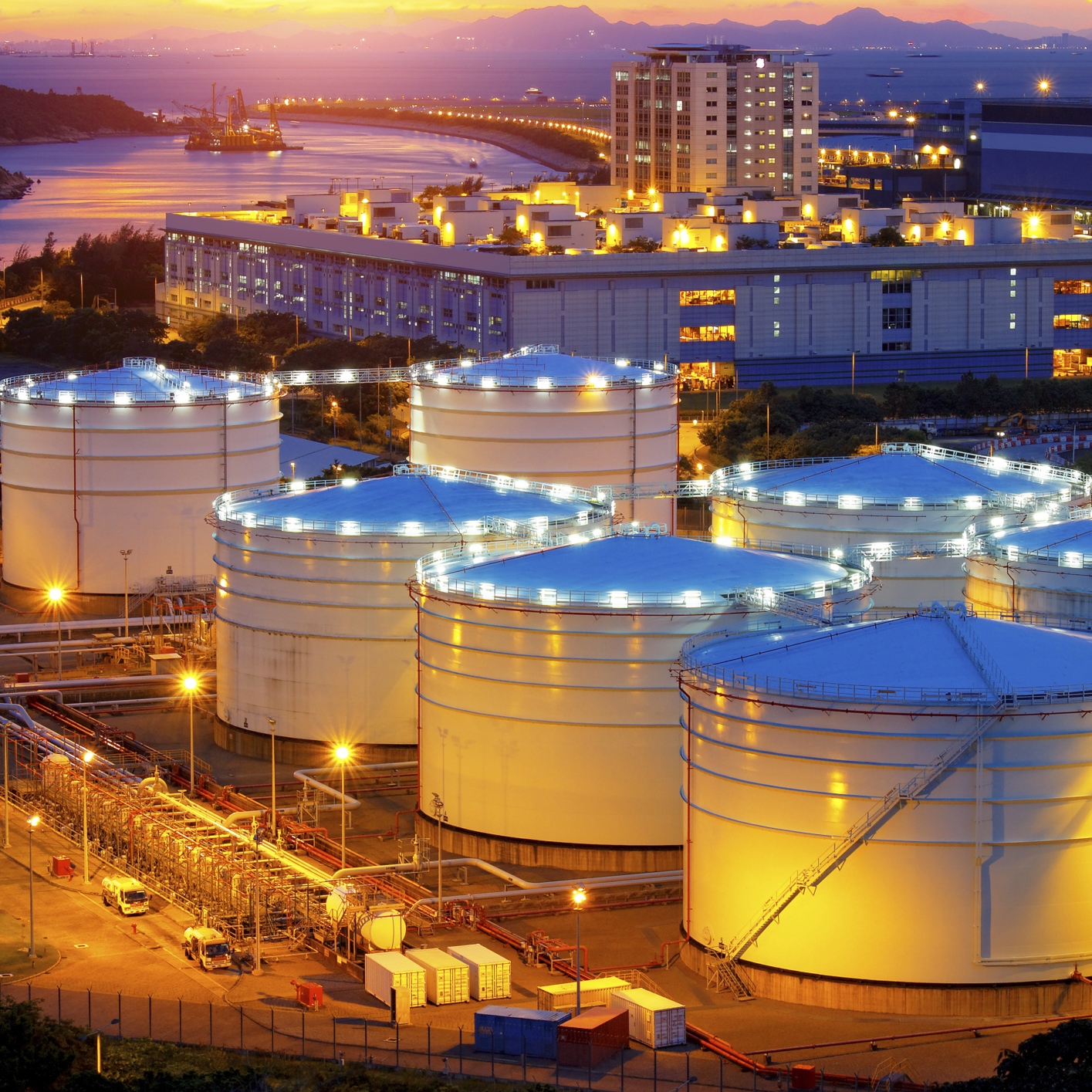
The U.S. Energy Information Administration (EIA) released its weekly petroleum status report Wednesday morning. U.S. commercial crude inventories decreased by 4.9 million barrels last week, maintaining a total U.S. commercial crude inventory of 529.9 million barrels. The commercial crude inventory stands at historically high levels for this time of year, according to the EIA.
Tuesday evening the American Petroleum Institute (API) reported that crude inventories fell by 4.3 million barrels in the week ending April 1. For the same period, analysts had estimated an increase of 2.9 million barrels in crude inventories. API also reported gasoline supplies fell by 116,000 barrels and distillate stockpiles rose by 2.7 million barrels.
Total gasoline inventories increased by 1.4 barrels last week, according to the EIA, and remain well above the upper limit of the five-year average range. Total motor gasoline supplied (the agency’s measure of consumption) averaged about 9.4 million barrels a day for the past four weeks, up by 4.2% compared with the same period a year ago.
benchmark West Texas Intermediate (WTI) prices turned higher at the end of Tuesday’s trading session, following remarks by Kuwait’s OPEC representative who said that the producers’ meeting scheduled for April 17 “will deliver” a production freeze regardless of Iran’s determination to raise its own production. The remarks contradict others from Saudi Arabia’s deputy crown prince, Mohammed bin Salman, who said last week that the Saudis will only agree to a production freeze if Iran and other major producers agree to do the same.
What is most likely now is that a production freeze will be agreed at the Doha meeting, but actual production will increase. The Saudis have decided that it is in their best interests to pump more, not less, oil now because they see an end to the age of oil, at least as we’ve known it since the end of World War II. Shortly after the Saudis announced in December of 2014 that they would not reduce production to drive prices higher, the country’s oil minister said that he did not think the world would see $100-a-barrel oil ever again.
The world’s proved reserves totaled 1.018 trillion barrels at the end of 2000, according to the EIA. At the end of 2014 that number had risen to 1.656 trillion barrels. Oil is not getting scarcer, but more plentiful. At a consumption rate of 100 million barrels a day, the world’s proved reserves will last another 45 years if no new oil is discovered. At the pace of alternative energy development, global demand for oil probably won’t last that long, at least at that high rate.
Before the EIA report, WTI crude for May delivery traded up about 3% at around $36.85 a barrel. WTI settled at $35.89 on Tuesday and rose to around $37.00 shortly after the report’s release. The 52-week range on WTI futures is $29.85 to $65.39.
Distillate inventories increased by 1.8 million barrels last week and remain above the upper limit of the average range for this time of year. Distillate product supplied averaged about 3.7 million barrels a day over the past four weeks, down by 6.8% when compared with the same period last year. Distillate production averaged over 4.9 million barrels a day last week, up by about 10,000 barrels a day from the prior week.
For the past week, crude imports averaged over 7.3 million barrels a day, down by 494,000 barrels a day compared with the previous week. Refineries were running at 91.4% of capacity, with daily input averaging over 16.4 million barrels, about 199,000 barrels a day above the previous week’s average.
Refinery utilization is up another percentage point week over week after adding two points last week. Refinery throughput is up by another 200,000 barrels a day, a jump of 600,000 barrels a day in the past two weeks. That crude inventories are down should come as no surprise.
According to AAA, the current national average pump price per gallon of regular gasoline is $2.047, down a fraction from $2.049 a week ago and up about 23 cents compared with the month-ago price. Last year at this time, a gallon of regular gasoline cost $2.388 on average in the United States.
Here is a look at how share prices for two blue-chip stocks and two exchange traded funds reacted to this latest report.
Exxon Mobil Corp. (NYSE: XOM) traded up about 0.7%, at $82.76 in a 52-week range of $66.55 to $90.09. Over the past 12 months, Exxon stock traded down about 5% and is down about 20% since August 2014, as of Tuesday’s close.
Chevron Corp. (NYSE: CVX) traded up about 1.2%, at $96.43 in a 52-week range of $69.58 to $112.20. As of Tuesday’s close, Chevron shares have dropped about 13.3% over the past 12 months and trade down nearly 31% since August 2014.
The United States Oil ETF (NYSEMKT: USO) traded up about 4.1%, at $9.50 in a 52-week range of $7.67 to $21.50.
The Market Vectors Oil Services ETF (NYSEMKT: OIH) traded up about 1.3% to $25.78, in a 52-week range of $20.46 to $39.80.
Travel Cards Are Getting Too Good To Ignore (sponsored)
Credit card companies are pulling out all the stops, with the issuers are offering insane travel rewards and perks.
We’re talking huge sign-up bonuses, points on every purchase, and benefits like lounge access, travel credits, and free hotel nights. For travelers, these rewards can add up to thousands of dollars in flights, upgrades, and luxury experiences every year.
It’s like getting paid to travel — and it’s available to qualified borrowers who know where to look.
We’ve rounded up some of the best travel credit cards on the market. Click here to see the list. Don’t miss these offers — they won’t be this good forever.
Thank you for reading! Have some feedback for us?
Contact the 24/7 Wall St. editorial team.
 24/7 Wall St.
24/7 Wall St.



